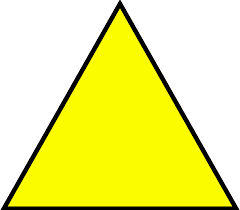How does the Abhidhamma view abstract ideas, such as numbers or triangles. If we take the triangle example, it can be argued that a triangle has an essence (sabhāva) which is “to have 3 sides”. I get the sense though that in the Abhidhamma numbers a triangles are treated as concepts only. Would that be true? If so, how do we discover what dhammas have sabhāva and which don’t? I assume it’s via something which can’t be broken down further, but how does that apply to my triangle example?
Now we are looking at an image of a triangle. The seeing consciousness is real, the visible objects are real - colors. The thinking process about the image is real.
Thus while triangle has no sabhava the thinking process that knows ‘this is a triangle’ is real. So there is a reason why we we know it is a ‘triangle’ > without the ultimate realities (that all have sabhava) there wouldn’t be ideas such as triangle, square, mother , father, me, you.
ABHIDHAMMA STUDIES BUDDHIST EXPLORATIONS OF CONSCIOUSNESS AND TIME
NYANAPONIKA THERA
Not only the “taking up” but also the “making” and the “remembering” of marks may be relevant to all cases of perception if it is understood as follows: What really happens in a simple act of perception is that some features of the object (sometimes only a single striking one) are selected. The mental note made by that perception is closely associated with those selected features; that is, we attach, as it were, a tag to the object, or make a mark on it as woodcutters do on trees. So far every perception is “a making of marks” (nimittakaraṇa). In order to understand how “remembering” or “recognizing,” too, is implied in every act of perception, we should mention that according to the deeply penetrative analysis of the Abhidhamma the apparently simple act of seeing a rose, for example, is in reality a very complex process composed of different phases, each consisting of numerous smaller combinations of conscious processes (cittavīthi), which again are made up of several single moments of consciousness (cittakkhaṇa) following each other in
a definite sequence of diverse functions. Among these phases there is one that connects the present perception of a rose with a previous one, and there is another that attaches to the present perception the name “rose,” remembered from previous experience. Not only in relation to similar experiences in a relatively distant past, but also between those infinitesimally brief single phases and successive processes, the connecting function of rudimentary “memory” must be assumed to operate, because each phase and each lesser successive state has to “remember” the previous one—a process called by the later Ābhidhammikas “grasping the past” (atīta-gahaṇa). Finally, the individual contributions of all those different perceptual processes have to be remembered and coordinated in order to form the final and complete perception of a rose.
see also:
sabhāvadhamma are not ‘ideas’
Puting that aside
Is there a core, stable, cross-contextual notion of “triangle” in mathematics?
Despite formal, foundational, or contextual differences — is there a coherent idea of triangle that persists?
PS: I used chatgpt to provide me with the math jargon
I suppose this means that which can be broken down has no sabhāva, and that our knowledge of abstract things like shapes or numbers is derived from experience yes?
yes..this is not always clear of course but yes. Like children when they begin to learn maths they start with blocks and put them together, then pictures of blocks, then numbers.. and it gets more and more abstract .
Then that answers my question ![]()
Note: The Triangle as a whole is actually just a concept or paññatti. The realities that @RobertK mentioned such as color or the cittas and cetasikas (perception) are real realities.
